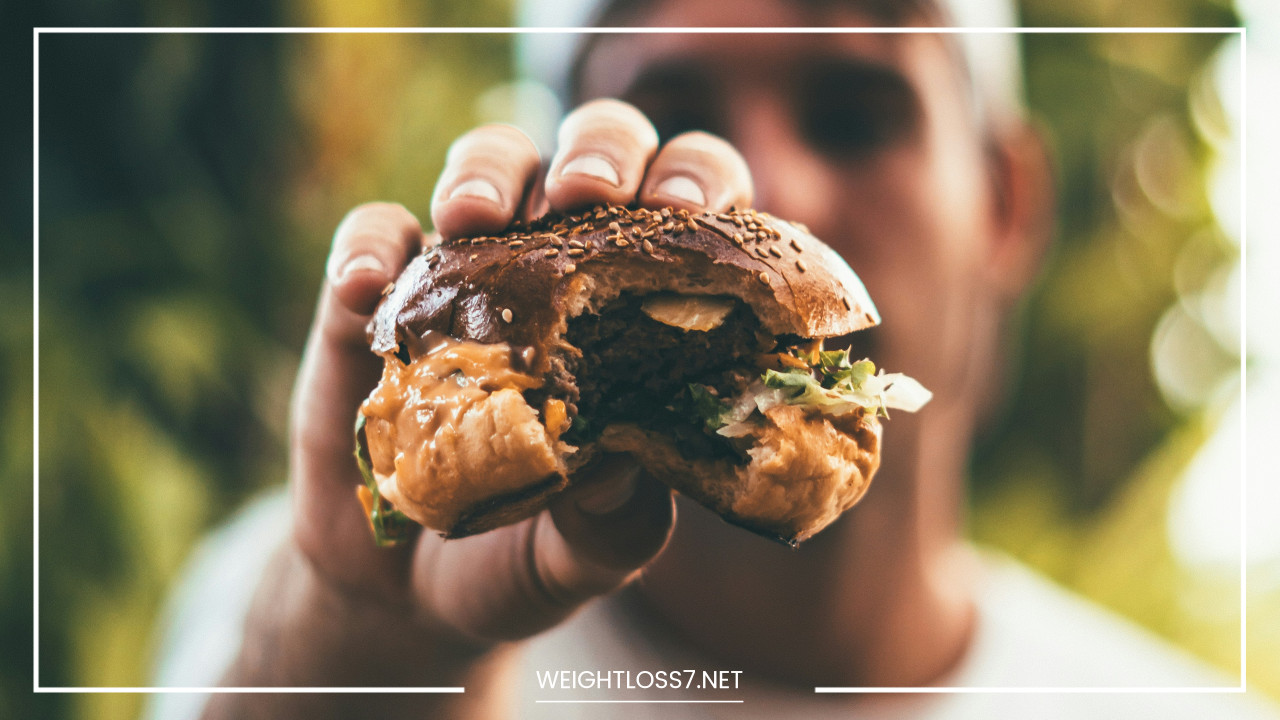The Hidden Fat Content in Your Diet

Healthy Fats
The Hidden Fat Content in Your Diet: Unveiling the Sneaky Sources and Crafting a Balanced Plate
The Fat Deception: Unveiling the Hidden Sources
We’ve all seen the enemy: the glistening, deep-fried culprits that leave a trail of grease on our fingers and guilt on our conscience.
But what about the seemingly innocent foods that harbor a secret stash of fat? This blog post delves into the world of hidden fat, unveiling the sneaky sources lurking in everyday meals and empowering you to craft a balanced, fat-aware diet.
Fat’s Role in the Body’s Symphony:
Before we embark on our fat-busting mission, let’s understand fat’s role in our body. Fat acts like a silent orchestra conductor, playing multiple crucial roles:
- Energy Storage: Fat serves as a reserve fuel source, providing sustained energy throughout the day.
- Organ Protection: Fat pads our organs, offering essential cushioning and insulation.
- Nutrient Absorption: Certain vitamins, like vitamins A, D, E, and K, are fat-soluble, meaning they require fat for proper absorption from food.
- Hormone Production: Fat plays a vital role in the production of hormones that regulate numerous bodily functions.
The Three Musketeers (and Their Villainous Cousin): Understanding Fat Types
Now, let’s meet the different types of fat, understanding their individual impact on our health:
- Saturated Fat: Found primarily in animal products like meat, whole-fat dairy, and some plant-based options like coconut oil and palm oil. Excessive saturated fat intake is linked to increased LDL (“bad”) cholesterol, elevating heart disease risk.
- Unsaturated Fat: This category is further divided into two beneficial players:
- Monounsaturated Fat: Found in olive oil, avocados, nuts, and seeds, monounsaturated fat helps lower LDL cholesterol while promoting HDL (“good”) cholesterol levels.
- Polyunsaturated Fat: Present in fatty fish (salmon, tuna), flaxseeds, walnuts, and soybeans, polyunsaturated fats also contribute to lowering LDL cholesterol and offer anti-inflammatory benefits.
- Trans Fat: The villain of the story, trans fats are formed during the processing of vegetable oils through hydrogenation. They significantly raise LDL cholesterol while lowering HDL cholesterol, posing a major threat to heart health. Thankfully, trans fats are being phased out in many countries.
The Culprits in Disguise: Unmasking Hidden Fat Sources
Now, let’s shine a light on the seemingly healthy foods that might be sabotaging your weight loss or heart health goals:
- Salad Dressings: Those creamy ranch or caesar dressings are often swimming in saturated fat. Opt for vinaigrette dressings made with olive oil and vinegar, or create your own healthy version with herbs and spices.
- Flavored Yogurts: Low-fat yogurts often compensate for taste with added sugars and hidden fats from fruit chunks and flavorings. Choose plain yogurt and add your own fresh fruit and a drizzle of honey for natural sweetness.
- Granola: This seemingly wholesome breakfast staple can be a landmine of hidden sugars and fats from added nuts, seeds, and oils. Look for whole-grain options with limited added ingredients, and consider making your own granola at home for complete control.
- Deli Meats: Lunchtime favorites like bologna, salami, and even some turkey slices can be surprisingly high in saturated fat and sodium. Opt for leaner options like turkey breast or chicken breast, or explore healthier alternatives like vegetarian deli slices made with lentils or chickpeas.
- Protein Bars: A convenient on-the-go snack, but some protein bars are loaded with sugar and unhealthy fats from added chocolate, syrups, and binding agents. Choose bars with a high protein-to-fat ratio (20g protein to 5g fat or less) and limited added sugars.
- Canned Soups: While convenient, canned soups can be loaded with hidden fat, especially cream-based varieties. Choose broth-based options or healthier cream substitutes like low-fat milk, light coconut milk, or cashew cream.
- Coffee Drinks: Those fancy lattes and cappuccinos often harbor significant amounts of sugar and saturated fat from whipped cream, syrups, and whole milk. Limit these treats, or opt for skim milk and sugar-free flavorings.
Beyond the Label: Decoding the Food Label Mystery
Armed with the knowledge of hidden fat sources, it’s time to become a food label detective. Here’s what to watch for:
- Serving Size: Don’t be fooled! A seemingly low-fat product can become surprisingly high if you consume more than the listed serving. Pay close attention to serving sizes and adjust your portions accordingly.
- Total Fat: This indicates the total amount of fat per serving, but doesn’t differentiate between types. Use this number as a general guide, but prioritize the next two points for a more nuanced understanding.
- Saturated Fat and Trans Fat: These are the ones to minimize. Aim for products with low saturated fat content (ideally less than 5 grams per serving) and avoid trans fat altogether (look for “0g trans fat” on the label).
- Ingredients List: Ingredients are listed in descending order by weight. If unhealthy fats like palm oil, coconut oil, hydrogenated oils, or “partially hydrogenated oils” appear near the top of the list, it’s a sign the product is high in saturated or trans fats.
The Good Guys: Embracing Healthy Fats for a Balanced Diet
Healthy fats are not the enemy; they’re your dietary allies! Here are some superstars to incorporate into your meals:
- Avocados: Rich in monounsaturated fats and fiber, avocados are a delicious and versatile addition to salads, toast, or enjoyed on their own.
- Nuts and Seeds: Powerhouses of healthy fats, protein, and fiber, nuts and seeds are perfect for snacking or adding crunch to salads, yogurt, or oatmeal. Enjoy them in moderation due to their calorie density.
- Fatty Fish (Salmon, Tuna): Packed with omega-3 fatty acids, these fish offer numerous health benefits, including promoting heart and brain health. Aim for two servings per week.
- Olive Oil: A heart-healthy monounsaturated fat, olive oil is a staple in Mediterranean cuisine. Use it for cooking, salad dressings, or drizzled over vegetables.
- Chia Seeds and Flaxseeds: These tiny seeds are brimming with omega-3 fatty acids and fiber. Sprinkle them on cereal, yogurt, or smoothies for an added nutritional boost.
Crafting a Fat-Conscious Plate: Practical Strategies
Now that you’ve identified hidden fats and embraced healthy ones, let’s translate this knowledge into practical meal planning:
- Cooking Methods: Opt for cooking methods that minimize added fat, such as baking, grilling, steaming, or poaching. Limit frying and sauteing with excessive oil.
- Portion Control: Practice mindful eating and use smaller plates to avoid overconsumption. Pay attention to your body’s hunger and fullness cues.
- Read Restaurant Menus Carefully: Be aware of hidden fat sources in restaurant meals. Opt for grilled or baked options over fried dishes, and ask for sauces on the side.
- Plan Your Snacks: Avoid unhealthy snacking by planning healthy options in advance. Fruits, vegetables with hummus, nuts, or yogurt with fruit are excellent choices.
- Make Healthy Substitutions: Swap fatty ingredients for healthier alternatives. Use low-fat yogurt instead of sour cream, lean ground turkey instead of beef, and unsweetened applesauce for baking instead of oil.
The Takeaway: A Balanced Approach to Fat
Creating a healthy diet isn’t about complete fat restriction; it’s about making informed choices and achieving a balanced approach.
By identifying hidden fats and incorporating healthy fats, you can craft a delicious, satisfying, and fat-conscious diet that supports your overall well-being. Remember:
- Read food labels diligently.
- Prioritize whole, unprocessed foods.
- Embrace healthy cooking methods.
- Practice mindful eating and portion control.
- Don’t be afraid of healthy fats – they’re your allies!
With these tips and knowledge, you can navigate the world of fat with confidence, making informed choices that pave the way for a healthier, happier you.
Beyond the Basics: Embracing a Fat-Positive Approach
While understanding hidden fat sources and making informed choices is crucial, it’s important to go beyond a purely restrictive approach. Here’s how to cultivate a fat-positive perspective for a sustainable, healthy lifestyle:
- Focus on Nutrient Density: Prioritize foods rich in vitamins, minerals, fiber, and other essential nutrients. When you nourish your body with these elements, you’ll naturally feel more satisfied and less likely to overconsume fat-laden processed foods.
- Celebrate Flavor: Don’t demonize fat because it enhances flavor. Explore a world of spices, herbs, and cooking techniques to create delicious and satisfying meals that are naturally lower in fat. Think of fat as an accent, not the main course.
- Embrace the Power of Plants: Make vegetables and fruits the foundation of your diet. They’re naturally low in fat and packed with nutrients. Explore a rainbow of vegetables for variety and discover creative ways to incorporate them into your meals.
- Mindful Indulgence: Restrictive diets often lead to cravings and binge episodes. Allow yourself occasional indulgences in moderation. Savor the experience, and don’t let it derail your overall healthy eating journey.
- Listen to Your Body: Learn to differentiate between physical hunger and emotional eating. Tune into your body’s hunger cues and eat until comfortably satisfied, not stuffed.
Building a Sustainable Fat-Conscious Lifestyle:
Creating a long-term healthy relationship with fat requires a holistic approach:
- Prioritize Sleep: Adequate sleep regulates hormones that control hunger and satiety. Aim for 7-8 hours of quality sleep each night.
- Manage Stress: Chronic stress can trigger unhealthy eating habits. Practice stress-management techniques like yoga, meditation, or deep breathing exercises.
- Find Movement You Enjoy: Regular physical activity helps manage weight and promotes overall health. Find activities you genuinely enjoy, whether it’s dancing, hiking, swimming, or team sports.
- Celebrate Non-Scale Victories: Don’t solely focus on the number on the scale. Celebrate improvements in energy levels, better sleep, and increased confidence.
- Seek Support: Surround yourself with positive influences who support your healthy lifestyle goals. Consider consulting a registered dietitian for personalized guidance.
Final Word: A Journey, Not a Destination
Developing a healthy relationship with fat is a journey, not a destination. There will be bumps along the road, but with knowledge, awareness, and a positive mindset, you can make informed choices about what you put on your plate.
Remember, a balanced approach with a focus on overall health and well-being is crucial for long-term success. Embrace the journey, celebrate your victories, and enjoy the delicious world of food with a newfound understanding of fat!

















